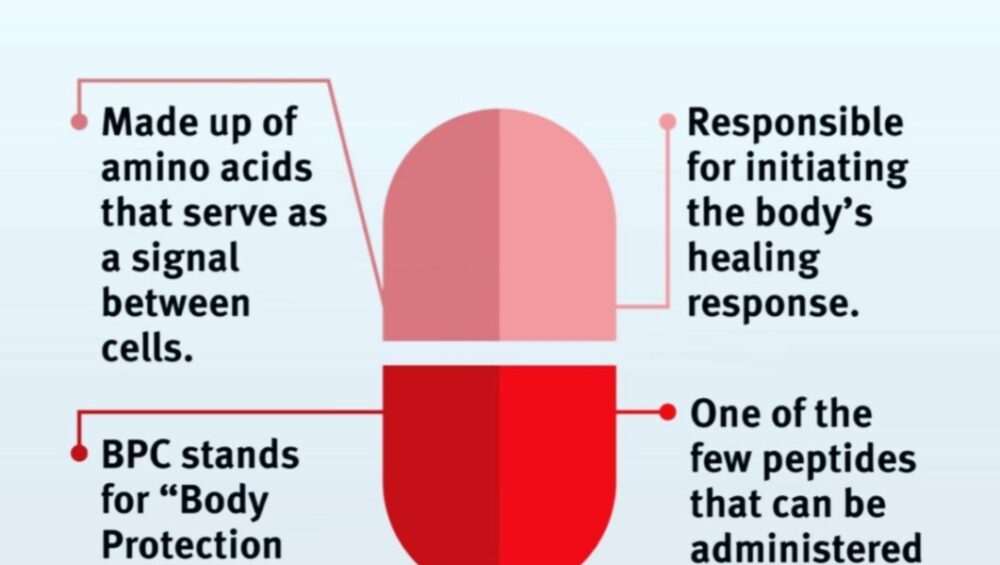
BPC 157: Unveiling the Science Behind a Potential Healing Agent
BPC 157, a cryptic name for a potentially groundbreaking compound, has been generating interest in the world of health and wellness. But what exactly is BPC 157, and what does the science say about its purported benefits? This blog delves into the fascinating world of BPC 157, exploring its origins, potential applications, and the current state of research surrounding it.
What is BPC 157?
BPC 157 stands for “Body Protecting Compound-157.” It’s a synthetic peptide fragment derived from a protein sequence found in human gastric juice. Peptides are short chains of amino acids, the building blocks of proteins. Scientists believe BPC 157 may possess various healing properties, although much remains to be explored.
Potential Applications of BPC 157
While research is ongoing, BPC 157 has shown promise in several areas:
- Wound Healing: Studies suggest BPC 157 might accelerate wound healing by promoting tissue regeneration and reducing inflammation.
- Muscle and Ligament Repair: BPC 157 could potentially aid in muscle and ligament recovery after injuries by stimulating collagen production and fibroblast activity, crucial for tissue repair.
- Gut Health: Research indicates BPC 157 might play a role in gut health, potentially promoting a healthy gut lining and reducing inflammation.
- Pain Management: BPC 157’s anti-inflammatory properties might contribute to pain management, although more research is needed.
It’s important to remember that these potential applications are based primarily on animal studies. While encouraging, human trials are necessary to confirm the effectiveness and safety of BPC 157 for these purposes.
Exploring the Science: A Look at Current Research
Much of the existing research on BPC 157 comes from animal studies. These studies have yielded promising results, suggesting BPC 157 might influence various biological processes involved in healing and tissue repair. Here’s a glimpse into some key findings:
- Gastrointestinal Protection: Studies in rats suggest BPC 157 can protect the stomach lining from ulcers and promote healing.
- Improved Recovery after Injury: Animal models have shown BPC 157 may accelerate healing of wounds, muscles, and ligaments.
- Anti-inflammatory Effects: BPC 157 exhibits anti-inflammatory properties, potentially contributing to pain relief and tissue repair.
These findings highlight the potential of BPC 157, but it’s crucial to acknowledge limitations. Most studies involve rodents, and their applicability to humans needs further investigation. Additionally, the exact mechanisms by which BPC 157 exerts its effects remain unclear.
The Current Landscape: Legality and Availability
BPC 157 is not currently approved for human use by any major regulatory body like the FDA (Food and Drug Administration) in the US or the MHRA (Medicines and Healthcare products Regulatory Agency) in the UK. This means its safety and efficacy for human consumption haven’t been definitively established.
Furthermore, the legal status of BPC 157 can vary depending on the region. In the UK, BPC 157 falls under the category of unlicensed medicines. Supplying or possessing unlicensed medicines can be an offense.
It’s important to consult with a healthcare professional before considering BPC 157. They can provide personalized advice based on your specific needs and medical history.
The Road Ahead: Future Research and Development
BPC 157 has captured the attention of researchers and the public alike. While the current research paints a promising picture, further studies are necessary to solidify its place in healthcare. Here’s what we can expect in the future:
- Clinical Trials: Human trials are crucial to determine the safety and effectiveness of BPC 157 for various applications.
- Mechanism Elucidation: Understanding the precise mechanisms by which BPC 157 works will pave the way for targeted therapies.
- Dosage and Delivery Methods: Research is needed to establish optimal dosages and delivery methods for BPC 157, if it’s proven safe and effective for human use.
BPC 157 represents an exciting area of research with the potential to revolutionize how we approach healing and tissue repair. However, responsible research and development are paramount before BPC 157 can be considered a mainstream therapeutic option.
Disclaimer: This blog from Phoenix Supplement Store is for informational purposes only and should not be construed as medical advice. Always consult with a healthcare professional before considering any supplement or treatment option.
https://www.gov.uk/government/organisations/medicines-and-healthcare-products-regulatory-agency

